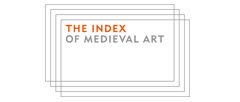ScholarWorks > Arts & Sciences > Medieval Institute Publications > STUDIES_IN_ICONOGRAPHY > Vol. 45 (2024)
Abstract
This study explores the capacity of two remarkable animal figures in the Mocatta Haggadah (Iberia ca. 1300 ) - a Peacock and a Dragon - to serve as multivalent actors who convey information keyed to Passover Seder participants of varying levels of religious and cultural literacy. In keeping with the pedagogical mandate of the ritual, these animals are shown to subvert their customary roles - both situational and iconographic - thus implying an unremarked degree of visual sophistication on the part of the Haggadah’s designers and some of its viewers. This work is a preliminary effort in a larger endeavor that examines the extent to which animal imagery in manuscripts made for medieval Jews may have offered advantages over that featuring humans.
Recommended Citation
Harris, Julie A.
(2024)
"The Work of the Beasts in the Mocatta Haggadah (London, UCL Mocatta Library, MS 1),"
Studies in Iconography: Vol. 45, Article 4.
Available at:
https://scholarworks.wmich.edu/studies_in_iconography/vol45/iss1/4



